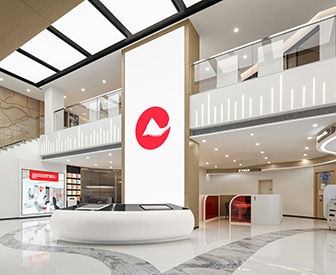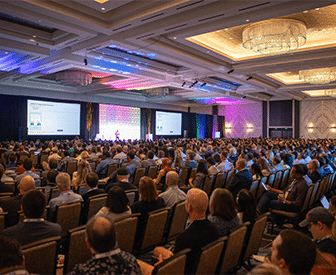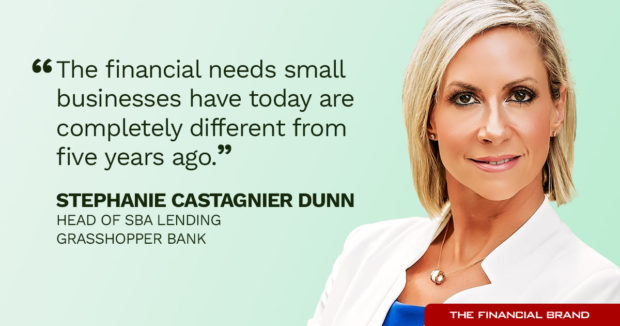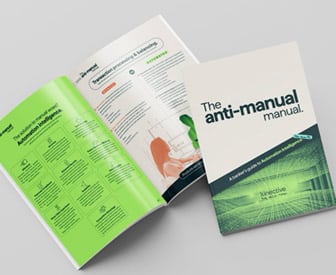The small business sector is undergoing a fundamental pivot in why and how it borrows.
The cause is a combination of factors: the aftermath of the pandemic, the continuing strong desire of many to work from home, the rising cost of credit, and a quirky commercial real estate market. Overlaying all this is the role of digital technology that has broadened the choices available to small business, though often at a price.
This is what Stephanie Castagnier Dunn sees in the market, even as the number of small firms in the U.S. continues to grow. Dunn is head of Small Business Administration lending at Grasshopper Bank, a digital institution with $733 million in assets, based in New York City.
“The financial needs small businesses have today are completely different from five years ago,” says Dunn, who has worked in SBA lending for more than two decades. “Banks have had to adjust.”
For both banks and borrowers, the shift is driven in part by remote workforces. Often media attention focuses on the work-from-home policies and pronouncements of major corporations, even the mega-banks like JPMorgan Chase. But Dunn points out that this trend impacts smaller firms as well. Often, they have to balance the preference many employees have for working from home against being able to serve their customers where and how they wish to be served. And remote working has affected small firms’ needs for commercial real estate to a degree and it has impacted recruitment and compensation.
But the cost of credit has driven the greatest change.
“Interest rates have tripled in the last 24 months,” says Dunn. This has caused a “credit compression” among small firms that will continue in the “higher for longer” environment that’s shaping up.
Five years ago, small businesses frequently wanted to maximize their leverage. “You were talking 3.5% interest rates,” says Dunn, “so it was almost a borrowing frenzy.”
But now, it’s the complete opposite, the banker continues, with rates in the neighborhood of 10%-11%. Small business borrowers have rediscovered frugality.

Getting Ready for Tomorrow: Practical Steps to Digital Maturity
This webinar explores practical steps to achieve digital maturity, tailored to the unique pace and needs of your institution.
Read More about Getting Ready for Tomorrow: Practical Steps to Digital Maturity

Why Industry Cloud for Banking?
PwC’s Industry Cloud for Banking helps deliver personalized products and services that today’s customers expect.
Minimalizing Credit Usage and Focusing on Getting Through the Present
“The common theme is to minimize the amount of money a firm needs to borrow to accomplish what its owners want to accomplish,” says Dunn.
In fact, the use of SBA credit has done a flip-flop.
Example: During the long, low-rate period many small businesses bought, or aspired to buy, their buildings. Today, many prefer to lease, with an option to purchase. Dunn says many feel they’ll lease for now and “buy it down the road.” She thinks this is wise and has advised some companies accordingly.
“Real estate in some pockets of the country is still overpriced,” says Dunn. “Nor do they want to buy $2 million in equipment anymore. Now they’re going to lease their equipment.”
The major need for SBA credit now is working capital — the simple fuel to get (and keep) the business moving.
“People are borrowing just what they need, not what they really want, and that’s a positive — being more debt-responsible,” she says. “The key right now is for businesses to stay vigilant and responsible, to borrow just what is needed to continue the operation — and to focus on maintaining monthly cash flow.”
Read more: How Can Banks Help Minority- and Women-Owned Businesses Cross the $1-Million Barrier?
When Businesses Grow Out of Owners’ Own Wallets
As the formation of small firms picked up, many entrepreneurs have been using their personal credit to get started. The use of consumer credit here is not brand new, but it has become a more significant factor than in the past.
“More people are trying to get money fast,” says Dunn. “The quickest way to get access to money is short-term debt, such as personal loans, credit card loans, personal lines of credit.”
Dunn says more people starting up small businesses have put themselves into more personal debt. Eventually, to dig out, they look at SBA credit. “They want to consolidate all those small lines they have, because it’s really difficult to manage all of it.”
Read more: What Small Businesses Want from Their Banks: Advice

Online ‘Fast, Easy’ Business Money Causes Extra Pain
A contributing factor is the proliferating number of “easy” nonbank small business credit available online, which can generally be tapped quickly and promise rapid turnaround.
“Our competition is fast, easy money,” says Dunn.
She says there’s a good deal of “noise” on the web about small business funding. And online borrowers can discover severe prepayment penalties and exit penalties that they didn’t realize they had agreed to.
“I see this every day now,” says Dunn. “Business owners come to me saying, ‘We needed the money. It seemed like it was fast and easy and only a 2% rate.’ But the fine print was 2% a month — or 2% a week.”
Read more: How a Community Bank Helps Business Borrowers Cope with Rising Rates

Creating A Community with CQRC’s Branch Redesign
Find out how SLD helped CQRC Bank to create the perfect harmony of financial services, local culture, and the human touch in their branch transformation.
Read More about Creating A Community with CQRC’s Branch Redesign

Join industry’s leading AI conference - free passes available!
Ai4 is coming to Las Vegas, August 12-14 2024. Join thousands of executives and technology innovators at the epicenter of the AI community.
Read More about Join industry’s leading AI conference - free passes available!
Bringing Together the Human and the Digital
Grasshopper is a digital bank, but its SBA program has long emphasized the availability of loan officers who can consult with applicants and borrowers.
Dunn says this is a key differentiator for the bank. “Being able to call, email or text a banker as you need, just like you do your CPA and other trusted professionals is crucial to small businesses.”
This need begins at the application stage, according to Dunn, noting that the SBA operating procedures manual runs to 700 pages.
“SBA lending is very much an art, not a science,” says Dunn. She says a good deal of “custom tailoring” in rates, terms and structures can be required.
That said, Dunn recognizes that small business credit has increasingly become a 24/7 affair. “Business owners need access when they need access,” she says, not when it is convenient for a lender.
So, in late April the bank launched a digital pre-qualification form on its website to help applicants go through the initial stages of the process in a self-service fashion that’s always available online. The form asks questions that previously were posed by Grasshopper SBA lenders over the phone, to screen applicants up front. Small businesses that pre-qualify can then schedule a phone appointment to talk with a Grasshopper lender.
The new application is in part a reaction to the online nonbank competition that’s been out there.
“We’re meeting them now where they need us to meet them,” says Dunn.








